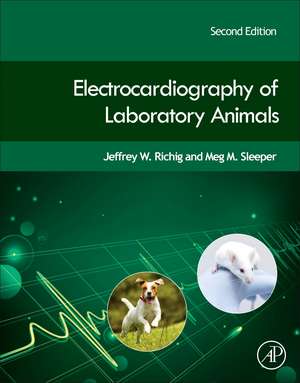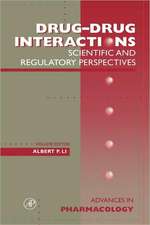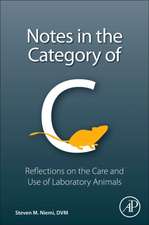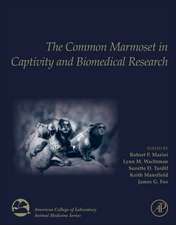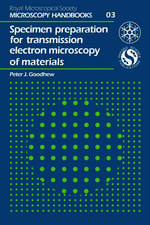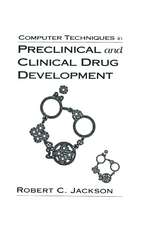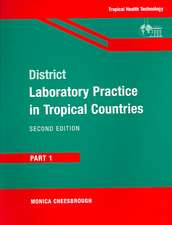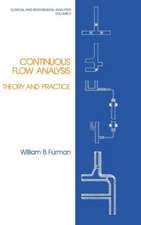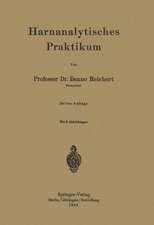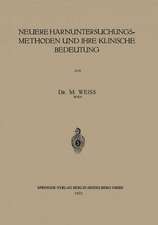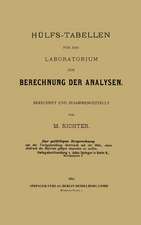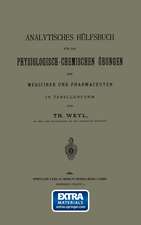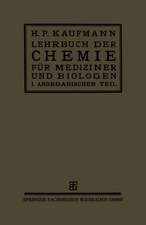Electrocardiography of Laboratory Animals
Autor Jeffrey W. Richig, Meg M. Sleeperen Limba Engleză Paperback – 6 noi 2018
- Offers guidance in interpretation of laboratory animal ECGs by animal type
- Provides comparisons of ECGs across animal species
- Includes coverage of three animal species: canines, nonhuman primates and mini pigs, also including three additional species: rodents (rats and mice), rabbits and cats
- Supports adherence to FDA requirements of ECG performance and qualitative analysis on large laboratory animals
| Toate formatele și edițiile | Preț | Express |
|---|---|---|
| Paperback (1) | 1352.00 lei 5-7 săpt. | |
| ELSEVIER SCIENCE – 6 noi 2018 | 1352.00 lei 5-7 săpt. | |
| Hardback (1) | 841.48 lei 5-7 săpt. | |
| ELSEVIER SCIENCE – 20 ian 2014 | 841.48 lei 5-7 săpt. |
Preț: 1352.00 lei
Preț vechi: 1825.62 lei
-26% Nou
Puncte Express: 2028
Preț estimativ în valută:
258.79€ • 281.19$ • 217.52£
258.79€ • 281.19$ • 217.52£
Carte tipărită la comandă
Livrare economică 14-28 aprilie
Preluare comenzi: 021 569.72.76
Specificații
ISBN-13: 9780128094693
ISBN-10: 0128094699
Pagini: 120
Dimensiuni: 216 x 276 x 14 mm
Ediția:2
Editura: ELSEVIER SCIENCE
ISBN-10: 0128094699
Pagini: 120
Dimensiuni: 216 x 276 x 14 mm
Ediția:2
Editura: ELSEVIER SCIENCE
Cuprins
1. Electrocardiography in preclinical safety2. Fundamental principles of electrocardiography3. Electrocardiography of rodents4. Electrocardiography of rabbits5. Electrocardiography of cats6. Electrocardiography of dogs7. Handling and restraint of non-human primates8. Electrocardiography of non-human primates9. Electrocardiography of neonates/juveniles10. Electrocardiography of minipigs11. Telemetry in preclinical safety studies12. PR (PQ), QRS, QT and other issues
Recenzii
"This book will be useful for laboratory animal researchers, veterinarians, veterinary technicians, and veterinary and graduate students as well as researchers who are studying potential cardiotoxic effects of new treatments. The authors have appropriately built on the foundation of the first edition with the addition of new pearls of wisdom and experience in obtaining and interpreting ECGs of laboratory animals." --Journal of the American Veterinary Medical Association
